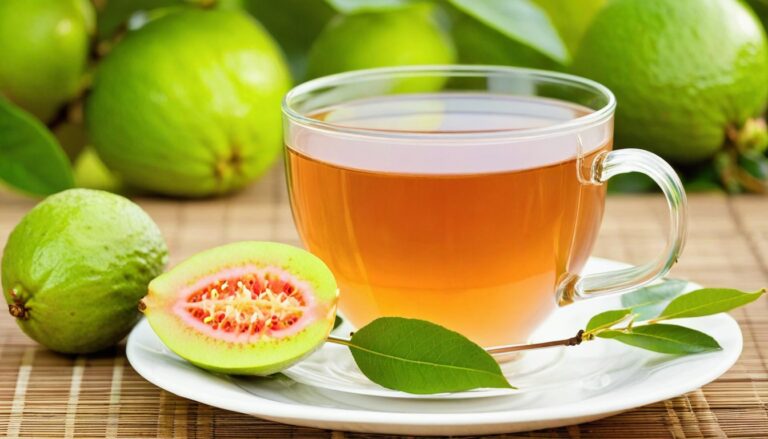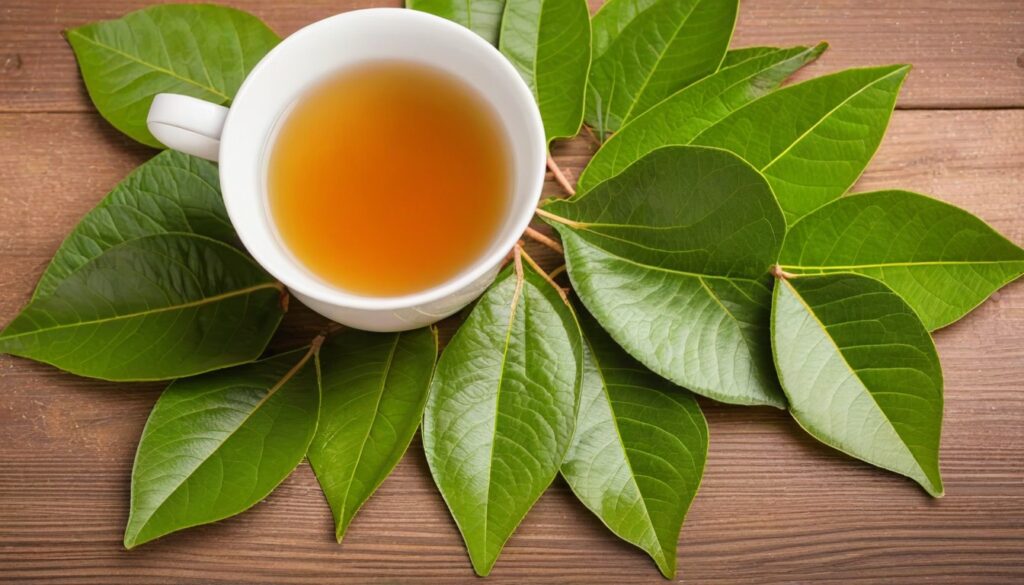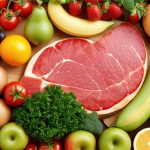Embarking on the journey of crafting your own guava leaf tea at home opens doors to a world of wellness and flavor. This guide aims to empower you with the art of creating this medicinal elixir in the comfort of your kitchen.
DIY Guava Leaf Tea encapsulates the essence of self-sufficiency and health-consciousness. By delving into the process of preparing this herbal infusion from scratch, you not only unlock its medicinal benefits but also experience the satisfaction of a hands-on approach to wellness.
Harnessing the full potential of guava leaves, revered for their medicinal properties, this guide dives deep into the preparation methods that extract and preserve their therapeutic elements. As we navigate the step-by-step process, you’ll discover how simple it is to transform these leaves into a rejuvenating brew packed with health-enhancing virtues.
Explore this DIY journey to brew and savor guava leaf tea, a testament to the fusion of nature’s offerings and our quest for holistic well-being.

Sourcing Guava Leaves
Finding Fresh Guava Leaves:
Local Markets and Grocery Stores: Explore local markets, farmer’s markets, or specialty grocery stores with a produce section that might stock fresh guava leaves. These locations often offer a selection of organic produce, increasing the likelihood of finding pesticide-free leaves.
Fruit Stands or Farms: Some fruit stands or farms specializing in tropical fruits might have guava trees. Consider reaching out to local farmers directly or visiting these farms for fresh guava leaves.
Harvesting and Selection Tips:
Selecting the Best Leaves: Opt for young, tender leaves that are vibrant green in color and free from blemishes or discoloration. These leaves often pack more flavor and beneficial compounds.
Harvesting Guidelines: If harvesting leaves from a guava tree, choose leaves from the upper part of the tree, as they tend to be newer and healthier. Gently pluck the leaves, ensuring not to damage the tree or take an excessive amount that could harm the plant’s growth.
Pesticide-Free Leaves: Prioritize leaves grown without pesticides or chemical treatments. If unsure about the source, consider washing the leaves thoroughly before use to remove any potential residues.
By exploring local markets, specialty stores, or directly sourcing from farms and adhering to selection and harvesting guidelines, you can ensure access to fresh and high-quality guava leaves for your homemade tea brew.
Preparation and Cleaning of Guava Leaves
Step-by-Step Guide:
Gentle Rinse: Begin by gently rinsing the harvested guava leaves under cool, running water to remove any visible dirt, debris, or residues.
Inspecting for Impurities: Thoroughly inspect each leaf, scanning for signs of pests, spots, or damage. Remove any damaged or discolored portions from the leaves.
Soaking in Vinegar Solution: Prepare a bowl of water with a diluted vinegar solution (one part vinegar to three parts water). Soak the leaves in this solution for a few minutes to help eliminate impurities and potential bacteria.
Final Rinse: After soaking, give the leaves a final rinse under running water to ensure they are free from any vinegar solution or remaining impurities.
Drying the Leaves: Pat the leaves gently with a clean cloth or paper towel to remove excess moisture. Allow them to air dry completely before using them for brewing.
Ensuring Impurity-Free Leaves:
Organic or Pesticide-Free Sources: Prioritize sourcing leaves from organic or pesticide-free sources to reduce the likelihood of impurities.
Thorough Inspection: Carefully inspect each leaf for signs of pests, damage, or discoloration before using them for brewing.
By following these meticulous steps, you can ensure that the guava leaves are thoroughly cleaned and prepared, free from impurities, and ready to unleash their natural goodness in your homemade tea.
Flavoring and Enhancements
Suggestions for Enhanced Taste:
Honey and Lemon: Infuse your guava leaf tea with a subtle sweetness by adding a drizzle of honey. Enhance its flavor further with a splash of freshly squeezed lemon for a refreshing citrusy note.
Ginger Infusion: Introduce a spicy twist to your guava leaf tea by infusing it with slices of fresh ginger. This addition not only enhances the taste but also adds a soothing warmth to the brew.
Minty Freshness: Consider incorporating fresh mint leaves for a burst of refreshing coolness. A handful of mint leaves added to the tea can uplift its flavor profile and provide a pleasant aroma.
Complementary Ingredients:
Cinnamon: Adding a cinnamon stick while brewing guava leaf tea introduces a comforting warmth and subtle sweetness to the infusion.
Lemongrass: Infusing guava leaf tea with lemongrass imparts a zesty, citrusy flavor that beautifully complements the herbal notes of the tea.
Vanilla Bean: For a touch of indulgence, consider adding a split vanilla bean during brewing. This imparts a delicate sweetness and a hint of floral aroma to the tea.
Experimenting with these flavoring options and complementary ingredients offers an exciting array of possibilities to tailor the taste of guava leaf tea to your preferences, enhancing your tea experience.

Brewing Techniques
Different Brewing Methods:
Boiling Method: Bring water to a rolling boil and add clean guava leaves to the boiling water. Allow the leaves to simmer for 5-10 minutes to extract their essence fully. This method is ideal for a stronger, more potent brew.
Steeping Method: Alternatively, steep guava leaves in hot water, just below boiling temperature, for 10-15 minutes. Steeping allows a gentler extraction of flavors and nutrients, yielding a milder brew.
Maximizing Medicinal Benefits:
Water Temperature Control: Avoid using excessively hot water, as high temperatures can potentially degrade some of the delicate beneficial compounds in the leaves. Aim for water temperatures just below boiling to preserve the tea’s medicinal properties.
Optimal Steeping Time: Pay attention to the steeping or boiling duration. Longer steeping times tend to extract more compounds from the leaves, but excessively prolonged brewing might result in a bitter taste.
Leaf-to-Water Ratio: Experiment with the ratio of guava leaves to water to find the right balance. Adjusting this ratio can impact the intensity of the tea’s medicinal benefits without compromising its flavor.
By exploring different brewing methods and paying attention to key techniques, you can customize your guava leaf tea brewing process to extract maximum medicinal benefits while ensuring a delightful tasting experience.
Consumption Recommendations
Frequency and Quantity:
Moderation is Key: As with any herbal remedy, moderation is advised. Begin by consuming guava leaf tea in moderation, starting with one to two cups per day.
Observing Effects: Monitor your body’s response to guava leaf tea consumption. Gradually increase consumption if well-tolerated, but refrain from excessive intake.
Consultation: For individuals with existing health conditions or on medications, consulting a healthcare professional is recommended before making guava leaf tea a regular part of their routine.
Addressing Precautions and Side Effects:
Pregnancy and Breastfeeding: Pregnant or nursing individuals should seek advice from a healthcare provider before consuming guava leaf tea due to limited safety data available.
Allergic Reactions: Individuals with known allergies to guava or related fruits should exercise caution and monitor for any allergic reactions upon consumption.
Hypoglycemia Risk: For those on medications for diabetes or with low blood sugar, guava leaf tea may lower blood sugar levels. Regular monitoring and consultation with a healthcare provider are advisable.
By adhering to these consumption recommendations and addressing potential precautions or side effects, individuals can harness the benefits of guava leaf tea while minimizing any associated risks.
Creative Uses Beyond Drinking
Natural Remedies:
Skin Compress: Boil guava leaves, let the solution cool, and use it as a compress for minor skin irritations or insect bites. The leaves’ anti-inflammatory properties can provide relief.
Mouthwash: Create a mouthwash by steeping guava leaves and allowing the solution to cool. This natural mouthwash may aid in oral hygiene due to its antimicrobial properties.
Beauty Routines:
Hair Rinse: Boil guava leaves and let the solution cool. Use it as a hair rinse after shampooing to promote scalp health and potentially reduce dandruff due to its antimicrobial effects.
Facial Steam: Add guava leaves to a bowl of hot water and use it for facial steaming. The steam may help open pores and cleanse the skin, offering a refreshing experience.
Home Remedies:
Aromatherapy: Dry guava leaves and use them in potpourri or homemade sachets to impart a subtle herbal scent in your living spaces.
Natural Repellent: Burning dried guava leaves can act as a natural insect repellent due to their aromatic properties.
By exploring these diverse applications, guava leaves can extend their utility beyond tea-making, offering natural remedies and beauty enhancements for everyday use.
Conclusion
In the pursuit of health and wellness, DIY guava leaf tea emerges as a simple yet potent elixir, easily crafted within the confines of your kitchen. Its creation demands nothing more than fresh guava leaves, a touch of creativity, and a desire to unlock its medicinal wonders.
The process to transform these leaves into a healthful brew is refreshingly simple. From sourcing fresh leaves to the gentle cleansing and brewing techniques explored in this guide, the path to a cup brimming with natural goodness is effortlessly attainable.
We encourage you to embark on this delightful journey of homemade guava leaf tea brewing. By embracing the process and exploring its medicinal virtues, you gain not just a drink but a conduit to wellness, crafted on your terms and tailored to your preferences.
Explore the depths of guava leaf tea’s medicinal properties. Allow its subtle flavors and therapeutic qualities to weave into your daily routine, offering not just a beverage but a ritual that fosters well-being.
As you lift your cup of freshly brewed guava leaf tea, savor not just its taste but the empowerment that comes from nurturing your health naturally, one sip at a time.


Meet Author
I am a Health/Wellness and Nutrition Blogger. Bringing you well-researched details on your nutrition and health information. I love Helping you enjoy good health with the right choice of food.
Disclaimer
The information provided on this page is intended for general informational purposes only and was gathered by research on general nutrition science and experiments. The content is not intended to be a substitute for your specific professional medical, nutritional, or fitness advice, diagnosis, or treatment.
Recent Posts
- 7 Surprising Reasons Why You Need a Balanced Diet Every Day as a Woman
- The Mediterranean Diet and Dementia: Protecting Brain Health
- Superfoods for Brain Health: Diet To Fight Dementia
- Nutritional Strategies for Managing Dementia Symptoms
- How To Recognize Early Signs and Symptoms of Dementia
- Managing Lewy Body Dementia: Understanding Symptoms and Nutrition
- Understanding Vascular Dementia: Causes, Symptoms, and Dietary Solutions
- Alzheimer’s Disease and The Right Diet: All You Need To Know
- Dementia vs. Normal Aging: Debunking Myths and Clarifying Realities
- What are The Risk Factors for Dementia?
- Dementia And Omega 3 Fatty Acid ( Eicosapentaenoic acid )
- The Role of Nutrition in Dementia Prevention
- Dementia: An Introduction to the Condition and Management
- Okra Extract Supplements: A Nutrient-Rich Addition to Your Wellness Routine
- Okra and Eye Health: Okra and Vitamin A for Clear Vision
- Fuel Your Fitness: Okra’s Role in Sustaining Energy and Enhancing Muscle Recovery
- Age Gracefully with Okra: Supporting Joint Health in the Elderly
- Slim Down with Okra: Low-Calorie Smoothie Recipes
- Why Okra is a Must-Have for Pregnant Mom: The Folate Advantage
- DIY Beauty: Okra-Based Face Masks for Radiant Skin
- Boosting Milk Supply: The Okra Advantage for Nursing Moms
- Boost Your Child’s Growth with Okra: A Nutrient-Packed Superfood
- How Okra Supports Cycle Regularity: The Menstrual Miracle
- Boosting Testosterone Naturally: The Role of Okra in Men’s Health
- Detox Delight: How Okra Supports Your Body’s Natural Cleansing Process
- How Okra Fights Cancer: Okra and Cancer Prevention
- Explore 10 Health Benefits Of Garlic: A Comprehensive Guide
- Health Benefits of Garlic for Fighting Cough and Cold Infections
- Can Garlic Be Used As a Natural Antibiotic?
- How Effective is Garlic in Lowering Cholesterol And Improving Heart Health?







